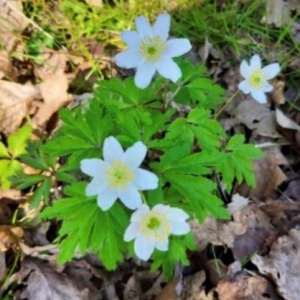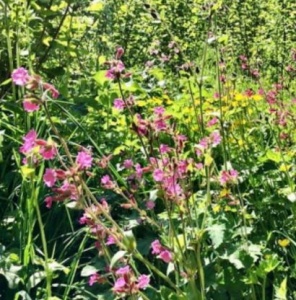We want to improve the natural beauty of your local woodlands by planting native wildflowers under trees by footpaths. This will make them more enjoyable for visitors, but just as important, increase the biodiversity of the habitats and combat the spread of invasive species. It will also increase your visual enjoyment of your Valley.

Wood anemones
About the project
Ground flora in Wellesley Woodlands and the A331 road corridor right now is mostly brambles and nettles - great for wildlife, but not very varied and not so nice to look at. Most of the trees in these woodlands are relatively young with little understorey and a narrow diversity of species. It could take decades for any ground flora to colonise these areas naturally, but by then invasive species, such as Spanish Bluebells, may have taken over. We need to stop this because most native invertebrates will not eat them. We made this important project the subject of our 2017 appeal and sowed 2 sites in Wellesley Woodlands and by Cove Brook, and have expanded it every year since.
What we're doing
Native flowers that you know and love, close to footpaths, will improve the scenery and make you feel proud of your local sites. Planting native wildflowers locally is providing vital food sources for bees, butterflies, and other insects, and this attracts those higher up the food chain such as birds and small mammals.

Red Campion
At sites along the Valley Partnership staff and volunteers are removing non-native species such as variegated archangel, montbretia, rhododendron, cherry laurel, and Himalayan and orange balsam, cutting back nettles and brambles, and thinning trees. Seeds purchased from a local supplier or sourced from other local sites are being introduced to suitable sites. Over five years we aim to increase the populations of wildflowers such as violets, wood anemone, wood sorrel, garlic mustard (Jack-by-the-hedge), lady’s and hedge bedstraw, foxglove, meadowsweet, water and wood avens, primrose, selfheal, red campion, wood sage, and upright hedge parsley – and of course bluebells, that staple of British spring time.
We are pleased to announce that the first sowings have reached flowering size. The fifth annual phase of this project will take place in 2021.
Read the Blackwater Valley Countryside Partnership Report: Woodland Flora Project 2020

